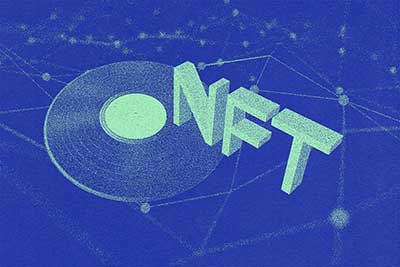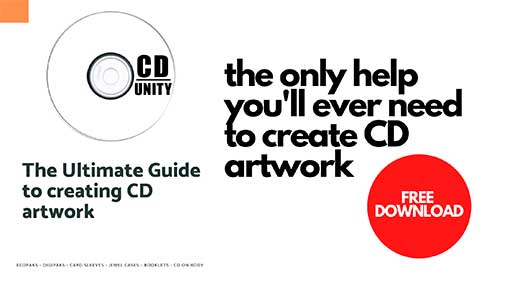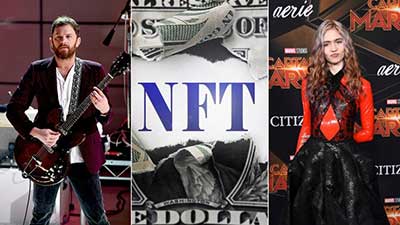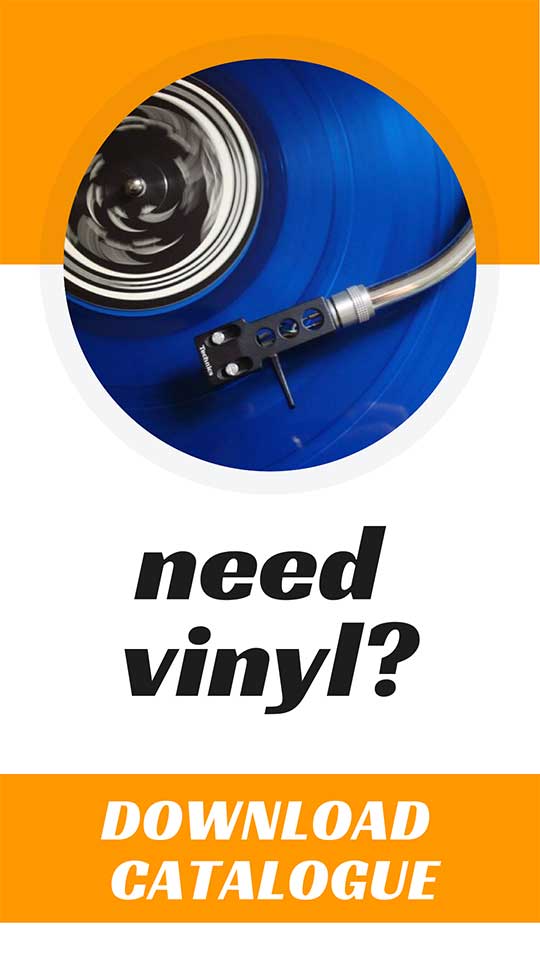NFT: What are NFTs and how can musicians use them?
NFTs are everywhere at the moment. They’re costing millions of dollars, inspiring explain-all videos across social media channels, and leading to a rise in cryptocurrency chat; but they aren’t even real?! Don’t worry, we’ve got you covered. Here’s the low down on everything fungible and not, and how every tech-savvy, switched-on musical artist is making money from this boom but you.
Firstly, NFTs are complicated. They are not as straight forward as CDs. They are pretty-much brand new to the world of global commerce and economist are still trying to predict their futures.
But whether you just want to seem clever with your friends, or realistically pursue the use of NFTs in your music, we’ve compiled the need-to-know info for you right here An NFT is a collectible digital asset.
They are two things you need to understand about them.
One, it is non-fungible, meaning it cannot be traded with another NFT (each NFT has an entirely unique value; it cannot be traded in the same manner as one British pound with another British pound).
This uniqueness derives from an NFT’s origins, being sourced from a cryptocurrency blockchain – or digital ledger – which tracks every aspect on that financial account. Essentially, when the NFT you are purchasing was made, it was given an entirely unique ID and fingerprint. There is only that one in existence, it is rare, and therefore, it is valuable.
Two, the NFT’s value is determined by the item they represent. You can buy an NFT for a famous oil painting and an NFT for an up-and-coming band’s new song. The latter is more valuable than the former.
All of this and more is explained further below, check it out.
The California Gold Rush took place in 1848. Essentially, gold – everyone’s favourite symbol of wealth and power – was found in a mill, in the American hills. Cut to, hundreds of thousands of miners from around the globe upping sticks and heading East in search of fortune.
NFTs are the modern-day Gold Rush. We know they’re valuable, NFTs are a relatively new commodity, and we’re all in a rush to get our slice of the money pie. So to help, we’ve compiled an explainer on all things NFT below.
What are NFT's?
An NFT is a collectible digital asset which represents an item of value. That NFT’s value is then determined by the item it represents, and the popularity of that item. For example, if you purchase an NFT of an oil painting, the NFT’s value will be drawn from the original painting. But instead of now owning the actual oil painting, you are purchasing, for example, a JPG file of the painting.
NFT stands for non-fungible token. In the simplest terms, when something is defined as fungible it means it can be replaced by another identical item. For example, the UK’s currency is fungible and allows a twenty-pound note to be swapped for two, ten-pound notes.
As NFTs are non-fungible, they are, largely speaking, one-of-a-kind. When you buy a NFT, it will have unique identifying codes which shows its value through rarity.
In more complex terms, NFTs are part of the Ethereum blockchain. A blockchain is a system of recording information in a way that makes it difficult, and near impossible, to cheat, hack, or change the system. In other words, it is a digital ledger of transactions, with the currency of choice being Ether. It is this history, or extra information, attached to each transaction, which makes it unique – giving an NFT unique value.
Why are NFTs popular now?
People love owning something rare. As humans, particularly in such a social media driven world, we are constantly comparing our lives with each other’s success, we want to embrace things that feel unique and special. We’ve been buying billion-dollar yachts and stealing famous paintings – all just to show that we have something that someone doesn’t.
But, in a less philosophical manner, the recent boom of NFTs can be traced back to a decision by Christie’s auction house in Pall Mall, London. For the first time in their two-hundred-and-fifty-year history, they began the NFT wave by selling the digital art-piece entitled “Everydays – The First 500 days”.
The piece chronicled years’ worth of daily drawings by the artist Mike Winkelmann, also known online as Beeple. This purely digital work was sold at sixty-nine million dollars. From here, public interest was piqued and the NFT popularity boomed.
Are NFTs a cryptocurrency?
NFTs are not crypto. They are bought and sold online, often with cryptocurrency, and they hold value as an online asset, like a cryptocurrency, but NFTs are not a cryptocurrency.
Additionally, a cryptocurrency is a ‘fungible’ form of asset, while NFTs are not. For example, one bitcoin can be swapped for one other bitcoin as they hold the same value. One NFT does not have the same value as another NFT.
NFTs are bought most commonly using Ethereum – a type of cryptocurrency – and stored on a permanent digital ledger, known as blockchain. This means that each transaction, and therefore NFT, is tracked and recorded. Each action, and therefore NFT, then has a unique identification.
Are NFTs bad for the environment?
NFTs are created using blockchains, a permanent digital ledger of transactions. To maintain an accurate record of every action on a blockchain, a significant amount of power and energy is needed. On top of this, each user’s security is maintained by a ‘proof-of-work’ system – to access financial records you have to complete a series of puzzles for examples. Again, this requires a lot of energy.
So much energy in fact that CryptoArt.wtf, a site designed to calculate the carbon footprints of NFTs, found that one piece called ‘Coronavirus’ required 192 kWh to be created. If, you’re like me, you won’t know whether that’s a lot or not. Well, 192 kWh equates to one EU’s resident’s energy usage over 14 days. And that was just to create a ‘simple’ GIF.
How to create NFTs?
For their potential value, the creation of NFTs is relatively simple. Here are the broad steps for creating a NFT on Ethereum:
- Sign up to Ethereum blockchain
- Create an Ethereum wallet which supports ERC-721 (the NFT token standard)
- Purchase an amount of Ethereum, ideally around £50
- Navigate to an Ethereum NFT marketplace, such as OpenSea, Rarible, or Mintable
- These marketplaces will have a ‘create’ function within them. Click on this, then add the details of your Ethereum wallet. You may also have to sign a message stating that the wallet is owned by you too.
- Upload the asset you want to create an NFT for
- You now own an NFT!
Are NFTs timeless?
Yes and no. Yes, in terms of the digital aspect of the NFT. The fact that they are predominantly online and therefore can’t wither through the ages in the same manner an oil painting may, adds to the impression of their longevity.
But technology is constantly improving. Therefore, in 100 years, the quality of JPEG NFT files will be relatively inferior – which may affect their financial worth.
Plus, people forget their passwords. I know I do. NFTs could therefore be lost forever on someone’s personal hard drive. But does that make them all the rare and more valuable? I honestly do not know – only time will tell.
How do musicians use NFTs?
Anything can be an NFT. From priceless paintings to online basketball cards. And even rocks. Yup, rocks. For a period, you could buy a “virgin rock” for the entirely reasonable price of two-hundred and seventy thousand dollars. But that opens the possibility of NFTs being harnessed by musicians.
For example, NFTs, because of their non-fungible nature, are perfectly suited for event tickets. For example, if you buy the ticket to your favourite band, there will be a unique record of that sale. Which means there is no chance of someone stealing and/or scalping your ticket without your knowledge. Thanks to its unique history on the blockchain (see above for clarification on this), the ticket is indefinitely attached to your name and your name only.
Similarly, this unique-tracing allows the selling of one-of-a-kind merchandise, if you have a bought Bob Dylan’s guitar pick from his first ever concert – and the associated NFT to prove this – you can refute another’s claim to have the actual pick. Again, this prevents forgery and cements your knowledge of the speciality of your bought item. Meaning, as a musician, you can charge more for the products you are selling, due to their guaranteed scarcity.
What are the pros and cons of NFTs for musicians?
NFTs are clearly the ‘big thing’ right now. But, if you’re going to use them, you will need to know what the positives and negatives of NFTs are. To help we’ve outlined some potential pros and cons below:
Pros of NFTs
- An NFT’s unique identifications give artists ownership over their products. When content creators, brands, or individual artists create a digital asset, an NFT has a built proof-of-authenticity. Consequently, this rarity adds value to the asset, and allows the owner to sell it for a higher price i.e., a musician selling an album. Put simply, a musician can profit from their work. With things like songs that are widely circulated, this could mean a significant income stream for the song’s creator.
- They’re unique and therefore collectable. At the basic level, humans love to collect something that’s unique or rare. It’s best to think of NFTS as collectable stamps, but digital. NFTs provide an extra layer of legitimacy to collectable content, similar to the unique image on a collectable stamp, cementing their rarity and value.
- They’re indisputable. Because non-fungible tokens are blockchain-based, they can never be altered, erased, or replaced. Again, when proving the origin or authenticity of digital content, this is a valuable quality.
Cons of NFTs
It would be remiss of us not to tell you that with NFTs, as with every new technology, there are some potential downsides. The disadvantages of NFTs include:
- It’s a speculative market. Economics is hard. Predicting economic trends is even harder. And right now, the big question is whether there’s any true value in NFTs. Are they a long-term investment? Or simply a passing fad? It’s hard to tell and truly, only time has the real answer. Currently, NFTs’ values have never been higher, but how long we all think that is so it is impossible to say.
- Digital assets can be copied. Because of their unique imprint of the blockchain, no one can copy your NFT. But the image it represents, and many other digital assets, can be copied. Again, this doesn’t mean the original’s value as a rare will be compromised, more so that the owner will have to come to terms with the potential existence of forgeries. To be harsh, when you buy an NFT, you buy a token of authenticity. You can’t stop people trying to rip that off
- Environmental costs. As we wade on into the ever-worsening climate crisis, the environmental impacts of NFT may well be an anchor around its fledgling neck. Already, it has been said about the environmental costs of blockchain-based cryptocurrencies such as Ether and Bitcoin. It takes a lot of computing power to enter records onto a blockchain. And to run those computers, energy resources have to be consumed. Therefore, issues of sustainability and longevity have long been hanging over NFTs.
- They can be stolen. Although the technology behind NFTs is relatively secure, many of the exchanges and platforms aren’t. As such, if someone is intelligent enough to hack the cryptocurrencies’ support network and/or blockchains itself, they could steal your NFTs.
How do NFT songs work?
This is where it gets interesting. How can someone buy the unique imprint of a song that was made by someone else, and, potentially, going to be played on the radio and private streaming platforms thousands of times? In one word, royalties.
To make this work, artists must sell their songs (and to a lesser extent other products) on an NFT marketplace.) Here, an artist can set the price of their NFT song and how much of the royalty shares they want to sell. Fans that unlock these royalties by promoting music on social media.
In essence, this is a win-win situation for both parties. The seller, or artist, gets increased traction and attention on their track. While the buyer, the fan, will get paid back for promoting the track and artist that they love.
All of this can be done on DittoMusic’s platform, Opulous Music NFT
Hope that was helpful.
If you need help creating your NFTs get in touch and we’ll help you out!
Thanks,
Rory
Get ready for your CD release!
Download our FREE pdf guide and be on the sure path to release your CD successfully.
Download pdf guideYou might also like:
Includes PR companies, UK promoters & UK booking agents. Everything you need to put your band on the map.







